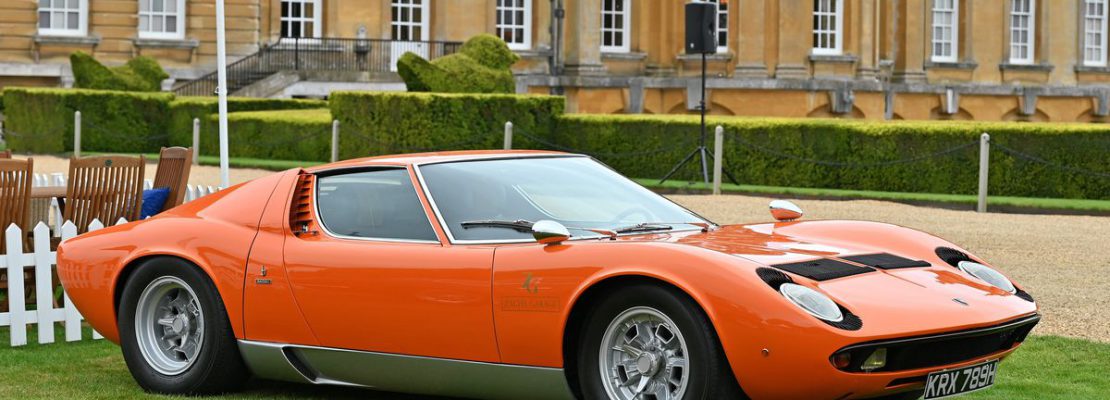A car made of glass. As clearly as possible. Car designer Marcello Gandini surprised the world in 1967, when Lamborghini brought the new Marzal to Prince Rainier and his wife Princess Gracia (Grace Kelly) before the Monte Carlo Grand Prix. Only one prototype, in which the seats had silver upholstery and the middle part and the doors were made entirely of glass, was finally made. According to the legends of the time, the owner Ferrucio Lamborghini did not think it was a good idea from a privacy point of view that women’s legs were clearly visible from the outside.
Lamborghini did not say goodbye to designer Gandini. A year earlier, he had created the successful Miura for the fledgling luxury brand at the time, a sports car that was distinguished by its curvaceous shapes and eyelash headlights.
This was followed in 1973 by the Countach, a fast sports car that was characterized by its aerodynamic shape and futuristic wedge. After Gandini experimented with vertically opening doors on the Alfa Romeo Carabo concept car in 1968, the Countach became the first car to be produced with these scissor doors. The Countach was on posters in many boys’ rooms in the 1970s and 1980s, including boys who later became car designers and proudly mentioned it in interviews.
Lamborghini
Last weekend, Gandini died at the age of 85 in Rivoli, on the outskirts of Turin. His funeral is this weekend in Turin, the city where he made many of his designs. He was not only known for the luxury sports cars he designed, besides Lamborghini he also worked for other Italian brands such as Alfa Romeo (Carabo and Montréal), Ferrari (GT4) and Lancia (Stratos). Gandini was also behind the first version of the famous Volkswagen Polo, the second generation Renault 5 and created the Citroen BX. All cheap cars, which distinguished themselves by providing a lot of space in small spaces, which many ordinary citizens have driven.
Gandini’s father had a different career in mind for his son. He himself was an orchestra conductor, he wanted his son to be a pianist. But, as Marcello Gandini himself later said, his father was also in the infancy of his career as a car designer by giving him a Meccano box as a gift when he was five years old, metal toys with which children then assembled cars. , planes and buildings can be placed.
Gandini worked briefly as an interior designer after leaving school. At the request of a friend, he played with the engine of his racing car, but also decided to modify the bodywork. At the age of 20 he designed his first concept car. He applied for a job at Bertone’s design studio, but was turned down by then chief designer Giorgetto Giugiaro. When he left a year later, owner Nuccio Bertone brought in the 27-year-old Gandini and quickly appointed him design director.
A year after being hired at Bertone, he presented his first calling card with the Lamborghini Miura. Already with the Lamborghini Miura, he moved the engine to the middle of the back of the car, behind the driver’s seat, setting a new standard that was later followed by other sports car manufacturers.
“It was only when my father saw Miura that he understood that I could play a different note than him: engine notes,” Gandini said three months before his death while receiving an honorary doctorate from the Technical University of Turin. “The roots of my upbringing are in a family tradition that did not allow you to deviate too much: the natural path was humanistic, literary, and cultural studies. But I rebelled and chose my own path.”
Employed by Bertone, Gandini built about one hundred cars in the fourteen years he worked there. This included many concept cars, but the designer, who is often referred to as a visionary, also created cars for the mass market at Bertone, such as the Volkswagen Polo and the first 5 series from BMW. “Cheap cars can be as good as very expensive ones,” he said in one of the few interviews with him. “For my own use, I prefer very practical cars.”
Citroen BX
In 1979, Gandini left Bertone and started his own business. With his own agency he produced cars that were more for the mass market, such as the Renault 5 (second generation) and the Citroën BX. Later he also helped Maserati with two versions of the Quattroporte, which was popular in the luxury segment at the time. He no longer confined himself to cars. His studio in Turin also made designs for helicopters, nightclubs, trucks and motorcycles.
Gandini continued to design until the end of his life. In 2017, Indian manufacturer Tata Motors showcased the TaMo Racemo sports car, which Gandini had designed for the brand, at the Geneva Motor Show.
With its sharp, futuristic contours, even late in life, he thought Lamborghini’s Countach was the most beautiful car he ever made, he said in an interview. At the very last time he removed the production line he was offered, but he refused the car. Her explanation: “I didn’t feel like cleaning it all the time.”

























